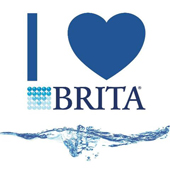
Dangerous contaminants such as lead, chloroform, arsenic, nitrate, nitrite, radon, and E. coli bacteria are common in tap water.
| | Bottled water, often advertised as a "pure" and "natural" alternative to tap water, is generally safe. But it's actually less regulated by the Environmental Protection Agency than municipal water supplies. Indeed, some bottled water is simply filtered tap water. With a flood of new water filters, impurities can be removed from your drinking water almost as easy as turning on the tap. Water filters have become simpler to install and more convenient to maintain. Some models that connect to the plumbing are now easier to install. And across types, more filters now feature electronic indicators that signal when it's time for replacement. |
| Filters use sieving, adsorption, ion exchanges and other processes. Unlike a sieve or screen, a filter can remove particles much smaller than the holes through which the water passes. |
How to Choose
| It's important to know what contaminants are in your water that so you can match the filter to the problem. Also, consider how much water you consume vs. how much effort and disruption to your daily routine you're willing to tolerate. Fit the filter to your needs. If your family uses several gallons of water a day, for example, single carafe-style filter needs constant refilling. | | Even within a specific type of filter, impurities removal claims vary.So match the filter to the actual elements in your home's water supply. Pick a filter that is certified by the National Sanitation Foundation and designed to reduce the contaminants found. Then, check our Ratings to gauge the actual performance of each water filtration device. |
| Generally, the more contaminants you need to remove, the more complicated the filter, though there are trade-offs. Consider all the costs. All of the models we tested have filters that must be replaced periodically to function effectively. |
Features
Water filters don't have a lot of bells, whistles, or features.
| Here are two water-filter features to consider. Easy plumbing connections Several under-sink and reverse-osmosis models use simple screw-on plumbing connections, rather than a saddle valve, which requires drilling into the cold-water supply line and might leak. Electronic indicator This convenience lets you know when it's time to change the replaceable filter. | |
Types
Consider the total cost. Some models require periodic replacement. While some replacements cost as little as $20, others may set you back as much as $400. Also, some systems require professional installation, which is an extra expense.
| | Carafe filters The better models we tested did an excellent job removing lead and chloroform without sacrificing cartridge life or flow rate. Others were slow and prone to clogging and have a short filter life. A carafe or two stored in the refrigerator might suffice for one or two people, but not for a family of four that consumes several gallons of water a day. |
| Faucet-mounted filters If you're looking for easy installation, these are a good choice for filtering drinking and cooking water. You simply unscrew the aerator from the threaded tip of the faucet and screw on the filter. Faucet-mounted filters let you switch between filtered and unfiltered water. On the downside, they slow water flow, and they don't fit on all faucets. | |
| | Countertop filters These filters screw onto the faucet after you remove the aerator. They let you filter large quantities of water without modifying the plumbing, and they're less likely to clog than carafe or faucet-mount filters. But they can clutter a countertop, and they don't fit all faucets. |
| Under-sink filters Like countertop filters, these can filter lots of water. But instead of cluttering the counter, they rob space from the cabinet beneath the sink. They also require professional plumbing modifications, and drilling a hole for the dispenser through the sink or countertop. | |
| | Reverse-osmosis filters These use household pressure to pass water through a semi-permeable membrane. They can remove a wide range of contaminants, including dissolved solids, and they are the only type certified to remove arsenic. But you must sanitize them with bleach periodically. Eventually the membrane must be replaced. They can also be extremely slow, rob cabinet space, and create 3 to 5 gallons of waste water for every gallon filtered. |
| Whole-house filters These are an inexpensive way to remove sediment and rust and, with some models, chlorine. Long cartridge life is another plus. But most whole-house filters aren't designed to remove many other contaminants, including cysts, metals, and volatile organic compounds. They require plumbing changes, but not at the sink or faucet. |
Brands
A number of familiar appliance makers are in the water filter business, including Whirlpool, GE, and Kenmore. Use these profiles to compare water filters by brand.
| | | | |
| | | | |
Written by Nicolas Yang





















